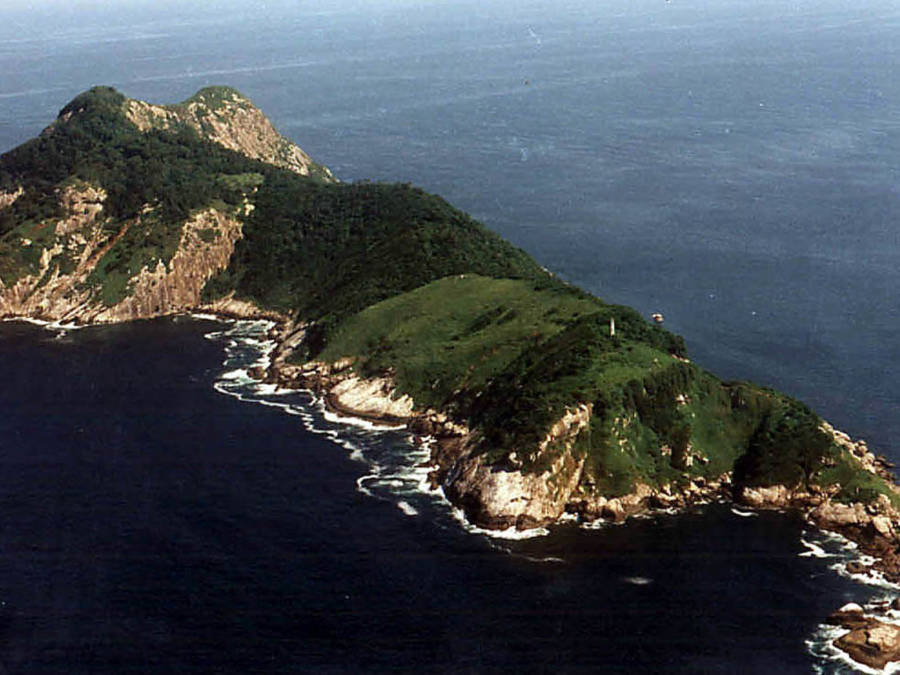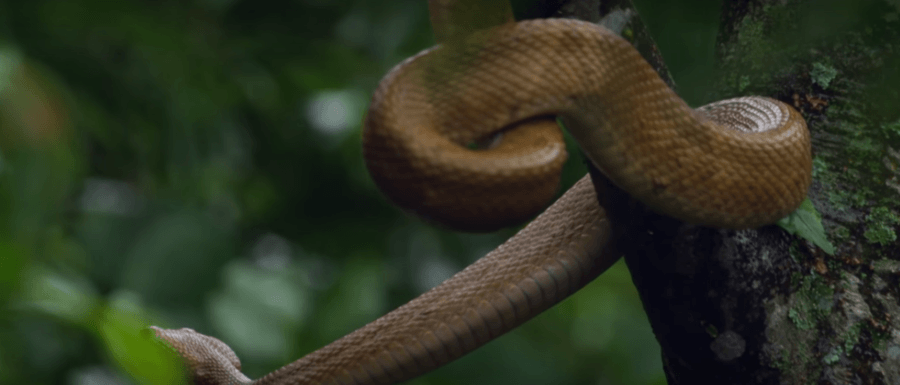This Brazilian Island Has So Many Snakes, Humans Aren’t Allowed

No humans are allowed on Snake Island and with good reason. There's about one deadly snake per square foot on it.
About 25 miles off the coast of Brazil, there is an island where no local would ever dare tread. Legend has it that the last fisherman who strayed too close to its shores was found days later adrift in his own boat, lifeless in a pool of blood.
The mysterious island is known as Ilha da Queimada Grande, and it is in fact so dangerous to set foot there that Brazil has made it illegal for anyone to visit. The danger on the island comes in the form of the golden lancehead snakes – a species of pit viper and one of the deadliest serpents in the world.
The lanceheads can grow to be over a foot-and-a-half long and it’s estimated that there are between 2,000 and 4,000 snakes on the island, which unsurprisingly is known as Snake Island. The lanceheads are so venomous that a human bitten by one could be dead within an hour.

Snake Island is uninhabited now, but people used to live there for a short period up to until the late 1920s when, according to legend, the local lighthouse keeper and his family were killed by vipers that slithered in through the windows. Today, the navy periodically visits the lighthouse for upkeep and makes sure no adventurers are wandering too close to the island.

Another local legend claims that the snakes were originally introduced by pirates seeking to protect buried treasure on the island.
In reality, the vipers’ presence is the result of rising sea levels – a less exciting origin story than paranoid pirates to be sure, but still interesting. Snake Island used to be part of Brazil’s mainland, but when sea levels rose over 10,000 years ago, it separated the landmass and turned it into an island.
The animals that wound up isolated on Queimada Grande evolved differently from those on the mainland over the course of millennia, the golden lanceheads in particular. Since the island vipers had no prey but birds, they evolved to have extra-potent venom so that they could almost immediately kill any bird. Local birds are too savvy to be caught by the many predators that inhabit the island and the snakes instead rely on birds who visit the island to rest as food.

Lancehead snakes, which are the golden lanceheads’ mainland cousins, are responsible for 90 percent of all snake bites in Brazil. A bite from their golden relatives, whose venom is up to five times more potent, is less likely to actually happen due to their island isolation. However, such an encounter is far more likely to be lethal if it does happen.
There are no fatality statistics of the golden lanceheads (since the only area they inhabit is cut off from the public), however someone bitten by a regular lancehead faces a seven percent chance of death if untreated. Treatment does not even guarantee a lancehead bite victim will be saved: there is still a 3 percent mortality rate.

It’s hard to imagine why anyone would want to visit a place where a painful death lurks every few feet.
However, the vipers’ deadly venom has shown potential in helping to combat heart problems, leading to something of a black market demand for the venom. For some lawbreakers, the lure of the money is incentive enough to risk almost certain death on Ilha da Queimada Grande.
look at the photo of the island; it is not even a big island.
ReplyDeletesimply burn it and the snakes to the ground and let it regrow without the snakes.
then trump can build a new tower hotel and golf course there.
Time for a visit from Saint Patrick
ReplyDelete